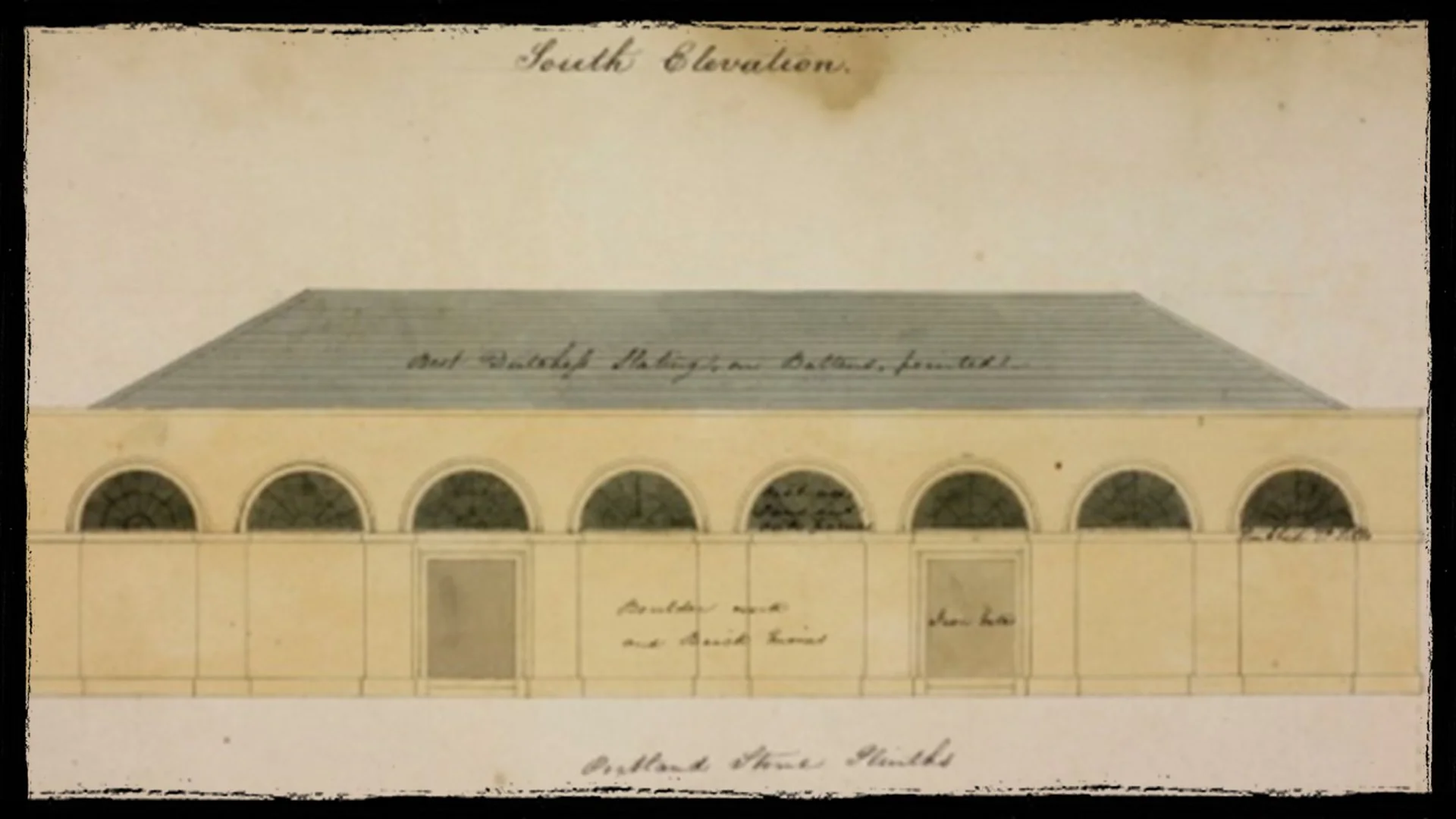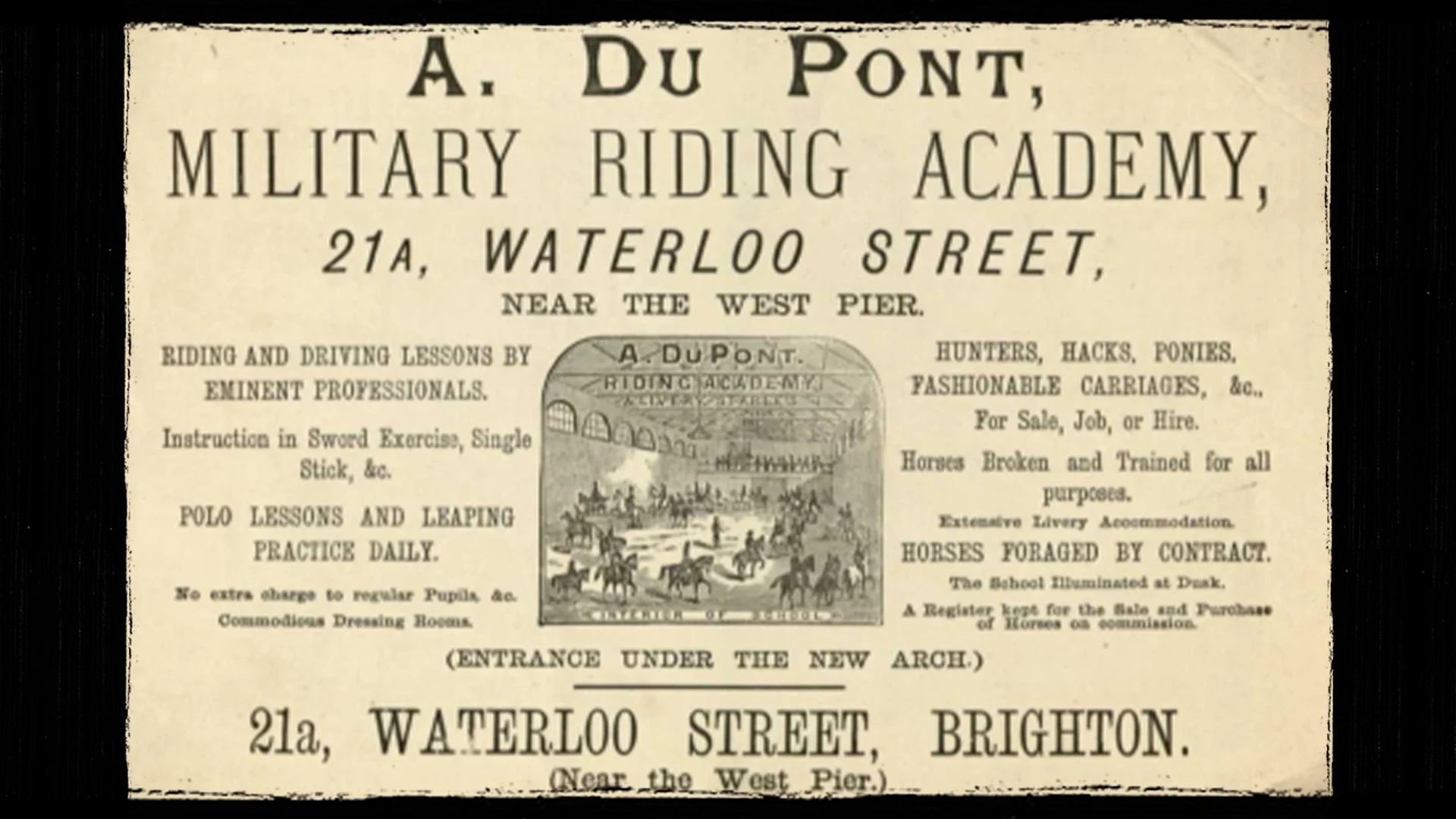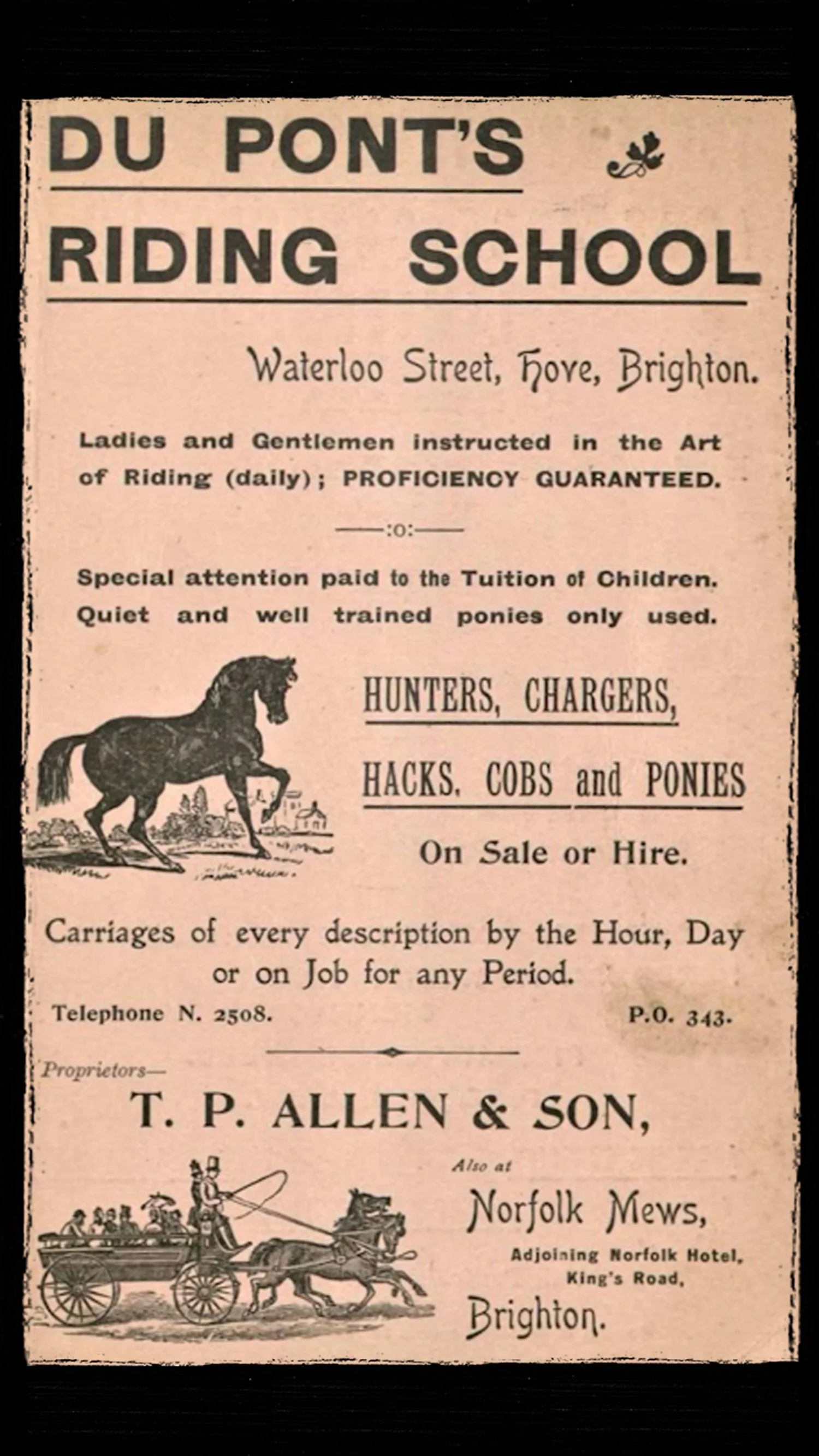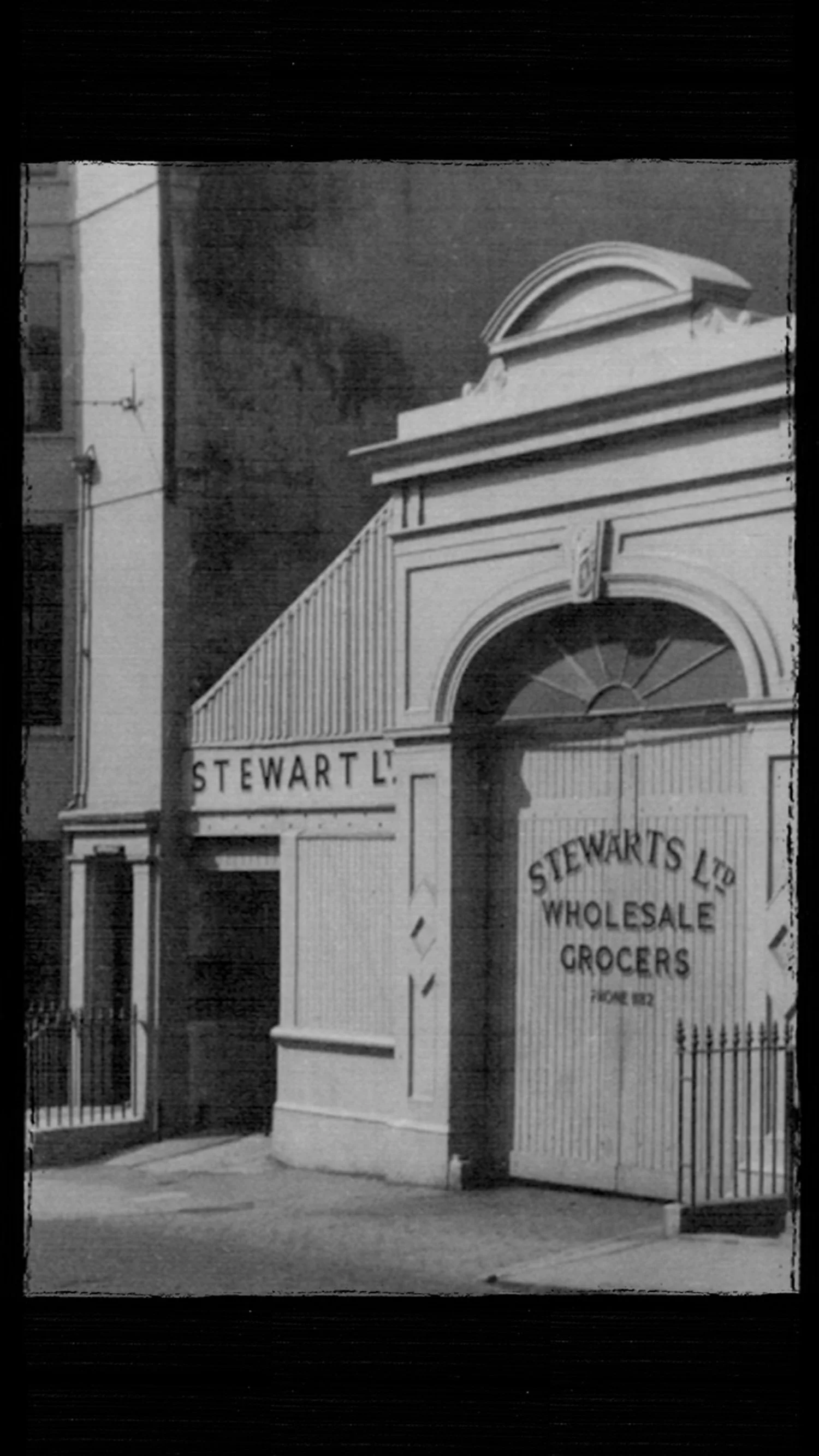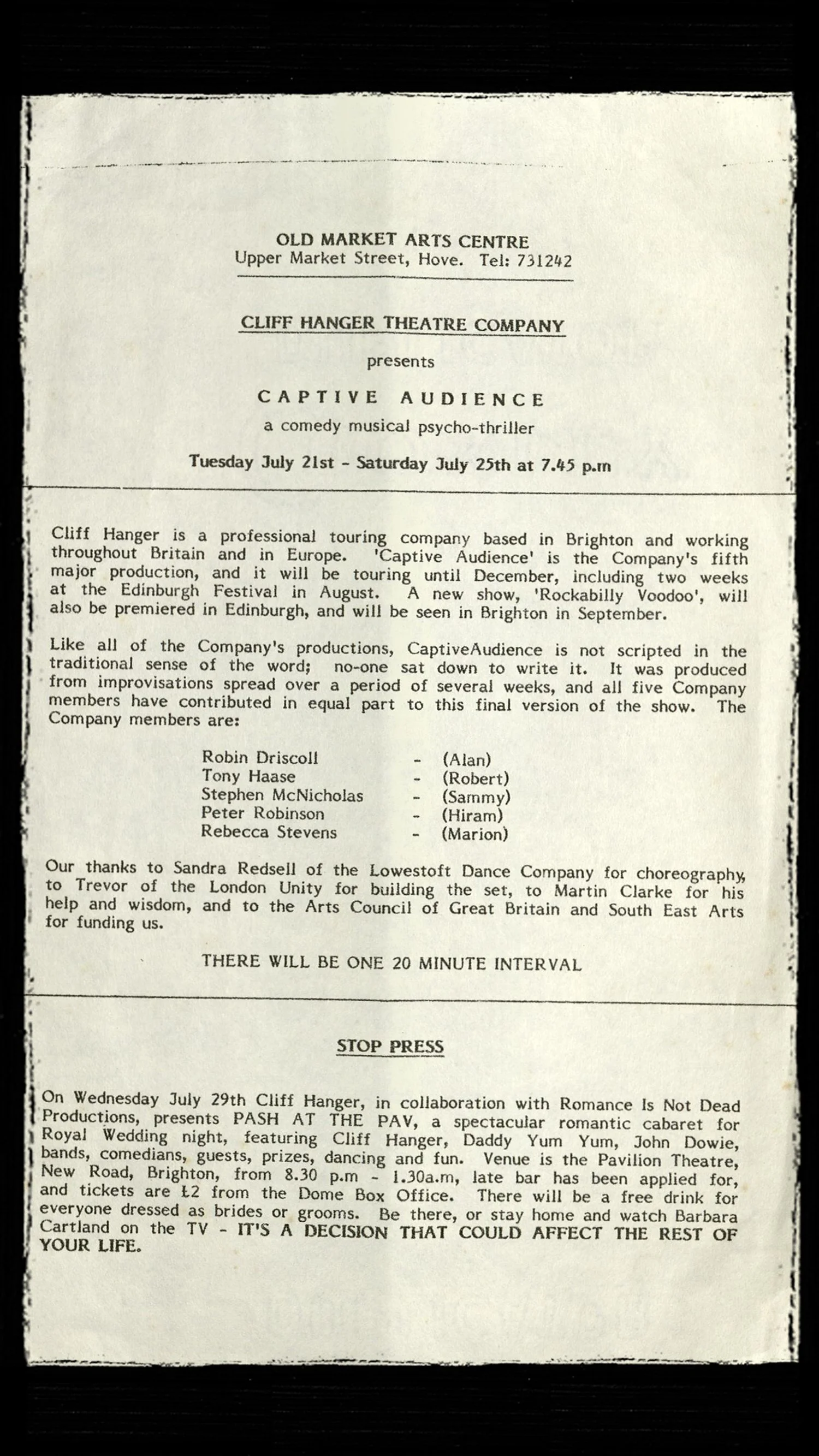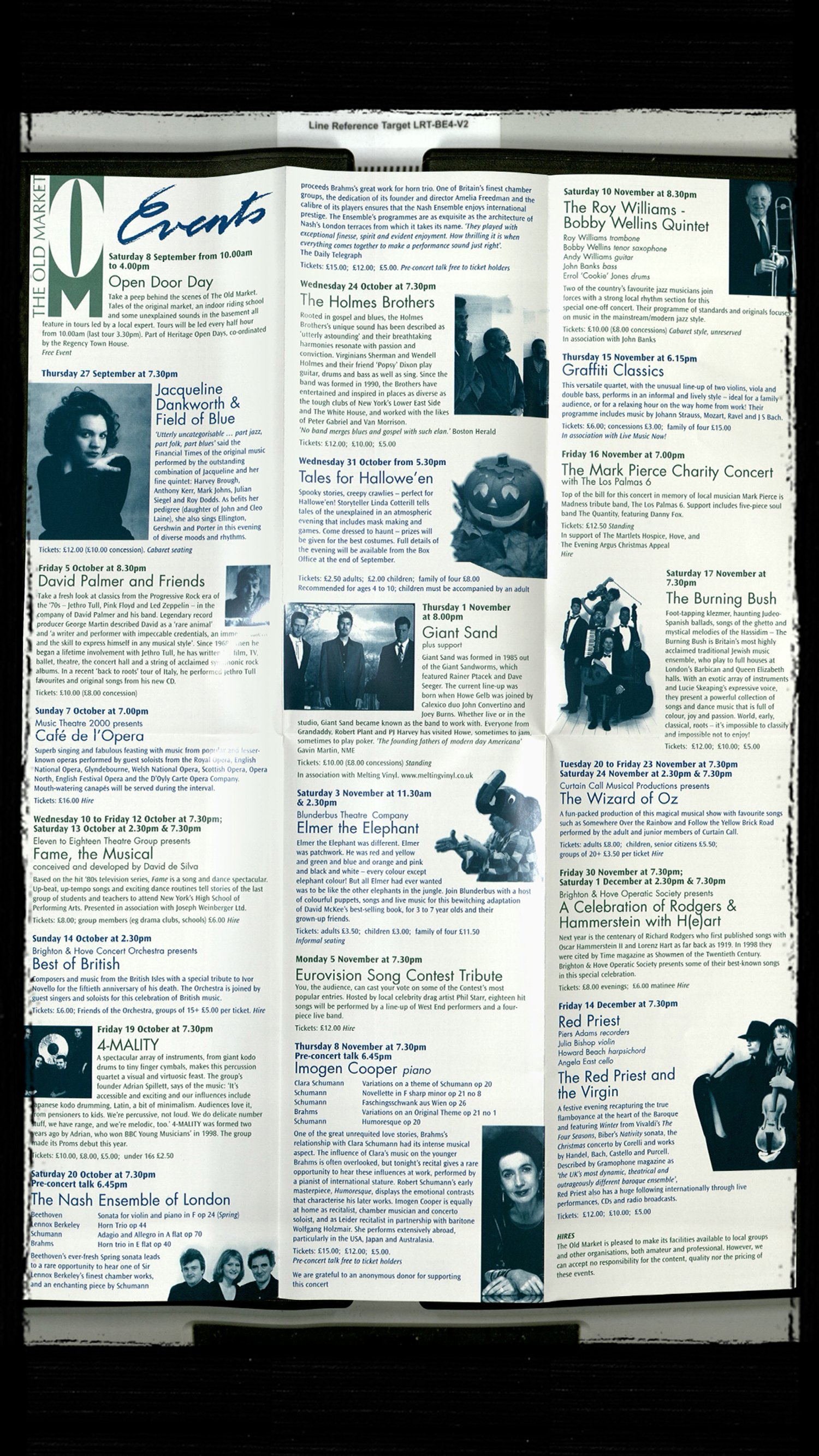The History of The Old Market, by Chris Nichols (Regency Town House)
C.A. Busby’s original design for the Brunswick Market courtesy of ribapix.com
A guest blog, written by Chris Nichols from Regency Town House
The Old Market has had a varied and rich history over its 200 years of existence… its time as the Brunswick market, its long history as a riding school, the tragic death of its most famous owner, as a wholesale grocers for over 30 years in the 20th Century and its current life as an Arts Centre.
1 - "The New Market"
The Brunswick Market was conceived as the Market Hall for the new, prestigious Brunswick Town estate. The self-contained new town was built on land owned by Thomas Scutt and designed by Charles Busby. This plan dates from 1823, but the market was much grander when it opened on the 28th August 1828. The market, wholly owned by Scutt, was never a success, and it closed in 1839. Shops were appearing at the northern end of Waterloo Street and along the new Western Road by this time, and the Brighton Commissioners modernised their market to combat this competition from Hove. Many of the early features, including the iconic arches and the elegant roof beams, still exist.
2 - Dupont’s Riding Academy
The building was briefly a school for poor Hove children; the first mention of it as a Riding School is in the 1848 Folthorps Directory when it was called the Roberts Riding Academy. It was renamed the West End Riding School in 1856.
Brighton Gazette, Thursday 18 August 1859
The fortunes of the Riding school changed dramatically when its most famous owner took over in 1875. Alfred Dupont re-brands the business, as can be seen in this advert.
Page’s Directory 1878
We have a lovely poster from 1881 which stresses the attractions of the Military Riding Academy as it is now known… 'tuition by eminent professionals', 'polo lessons and leaping practice', 'the school illuminated at dark’, and the entrance was under the New Arch!
At the same time, Dupont added an imposing North Wall and built the large ramps within the building. The adverts in the Directories were also constantly updated. In 1884, "the electric light, instead of gas" is mentioned, indicating a modern, innovative, thriving business. The ubiquity of the horse in Victorian life is at its height in this period. It is rumoured that the ghosts of the horses still inhabit The Old Market…
1886 plans, courtesy of The Keep
Alfred Dupont tragically lost his life in a dreadful riding accident on Wednesday 2nd July 1890, killed after his horse bolted and kicked him outside his house in Denmark Villas. "Death was due to concussion of the brain and fracture at the base of the skull." A verdict of accidental death was recorded, and he was buried at Great Cornard, near Sudbury in Suffolk, on the following Tuesday (on what would have been his 52nd birthday). The Sussex Daily News said he was one of the most prominent and most highly respected of local public men. It was said that his engaging manner and personal magnetism won him many friends.
3 - The legacy of the Dupont name…
Although Dupont dies in 1890, and the business is sold the following year, the name carries on well into the late 1920s, indicative of the prestige of the name. This poster, dating from 1912, when T. P. Allen is the Proprietor, is much less militaristic than the 1881 poster, with riding going to be more for fun with "special attention paid to the tuition of children" and "ladies and gentlemen instructed in the Art of Riding."
An article called "Equestrianism in Brighton" appeared in 'The Brighton Season' edition for 1911/1912, extolled the virtues of the school… "Mr T. P. Allen, whose riding school in Waterloo Street, possesses a world-wide reputation, and who for many years has associated himself with all matters appertaining to the arts of riding and driving in Brighton". The picture below is a rare photograph of what the inside of the riding school looked like.
Allen’s Riding School and Ladies Gallery from the Brighton Season 1911/12
Cars were replacing horses; many of the old stables in much of the Brunswick area were becoming garages, either domestic or commercial. The last mention of the Riding School in the Street Directories is 1928.
4 - A Wholesale Grocers
In 1931, the building is listed in the Kelly’s Directory as Stewart Ltd, Wholesale grocers, for the first time. There were areas for different products including Soaps/Household, Tea and Coffee, Jam and Pickle, Butter and Cheese and Bacon Hanging, amongst others. These can be seen in these early ground-floor plans, submitted in 1929.
The Stewarts Wholesale grocers shared the building with other businesses in the 1930’s including antique dealers and a sports shop. After the war, changes continued…a goods lift was installed in 1958, the plans for that also inform us of the 10 females and 25 males who worked at Stewarts at the time. A few years earlier, a bacon-curing area had been introduced. The photo below, again found at the Keep, dates from 1946 and shows the enclosed entrance in Waterloo Street. By the 1960’s the building was a warehouse.
By the 1970s, the building belonged to the Sussex Mutual Building Society and on 10 September 1971, it was given Grade II listed status. The fate of the building at this time reflects the changing fortunes and decline of the Brunswick area. Many of the large houses in the area, including Waterloo Street, had declined into poor-quality multi-occupancy housing. Many of the businesses on Waterloo Street had gone by 1980.
This picture shows the sorry state of the building when it was up for sale in 1975
5. The Old Market Arts Centre (OMAC)
In October 1976, the building was purchased by the Brighton and Hove Arts Council for £25,000, and a charitable company was formed to run the building as The Old Market Arts Centre. Below is an early example of a Fundraising campaign for OMAC, from 1976.
Volunteers carried out a huge amount of conversion work, and the first concerts were held in 1979. Below is an early programme from one of these concerts. The intention was to make the building into an arts hub for Brighton and Hove. There was an art studio, a pottery studio, an art gallery, and classes in ballet and yoga. There was also a Film Society, and it was a meeting place for many local arts groups.
In 1979, the famous Long Bar was installed; it had originally been built in 1906 for the Grosvenor Hotel at Victoria Station. It came complete with the copper figureheads, the hand pumps and mirrors; it took over 100 hours to dismantle it. It was reputed to have been where hundreds of soldiers said, and drank, their farewells before leaving for the horrors of trench warfare on the Western Front. A member’s newsletter from that year said the bar was due to open on the 27th July that year, but unfortunately, it has proved to be impossible to find either photographs or newspaper reports of this momentous occasion.
Another programme from 1981 features the famed Cliffhanger Theatre company, which featured one of the current owners, Steve McNicholas (before Stomp!)
However, OMAC was losing a lot of money, renewed fundraising campaigns were unsuccessful and by July 1981, there was both a cash and management crisis. Bob Gunnell, well known as the station manager of Radio Brighton, resigned as chairman of the OMAC management council in that month. Worse was to follow the following year, with OMAC closing in May 1982 with reported debts of £50,000, and losing £3,000 a month. In 1984, the property company Period Properties bought the building, putting in a planning application in 1985 for 33 flats, which was rejected by Hove Council. There were several other attempts to convert the building into housing, all thankfully unsuccessful. In March 1993, the building was bought by the Jersey-based Seamount International for £250,000; their plan for flats also failed.
The Hanover Band purchased the building from Seamount International in March 1996, and once again, there were plans for an Arts Centre; the building had been empty for 13 years at this point. They received a huge Lottery Fund grant of nearly £3.9 million for much-needed restoration, and the opening concert was held on the 25th November 1999. The building was rechristened The Old Market and was administered by the Old Market Trust with Stephen Neiman as the Chief Executive.
Argus Headline, 1997
The internationally famous Hanover Band were based at The Old Market, the newly refurbished building was awarded Highly Commended in the prestigious Sussex Heritage Awards in 1999. There were some more high-profile financial difficulties around the turn of the Millennium, but the Old Market was putting on a packed and varied programme as can be seen in the 2001 Autumn programme poster.
Autumn Programme 2001
However, the Old Market Trust were in financial difficulties for much of the remainder of their tenure in the building. There were at least two attempts to build flats to offset these problems, plenty of objections said they were quite out of character with such an important listed building. In January 2010, it was announced that the Old Market Trust had gone into liquidation because of non-payment of tax debts amounting to £240,000, with the total amount coming to at least £1.2 million.
6. Recent History
Since 2010, The Old Market has been owned and managed by Steve McNicholas and Luke Cresswell. Local residents, the pair are the creators and directors of the global hit phenomenon STOMP, following on from their previous work in Pookiesnackenburger and the Yes/No People. In fact, The Old Market played a key role in STOMP’s conception; it was the very first place Steve and Luke worked together.
The cast of STOMP, photo by Steve McNicholas
In order to create a venue comfortable for audiences and suitable for performers, Steve and Luke invested in various upgrades to the building’s interior. A lighting rig was tucked above the Main House’s original wooden beams, an automated ‘raked’ seating unit was installed to improve audience viewpoints, and the bar was refurbished as a brighter and more inviting space. Refreshed and fit for purpose, The Old Market reopened in May 2011. To reflect its new lease of life, it was christened with the new nickname, TOM. To date, the venue has had well over 2,000 different performances, with prestigious acts having graced the stage in recent years, including Michael McIntyre, Spymonkey and Frank Carter and the Rattlesnakes, to name but a few, alongside regular festivals including Brighton Festival, Brighton Fringe and #TOMtech, the future is looking bright. Fond memories are a pleasure matched only by hunger for more.
Chris Nichols, August 2025
Many of the images are used with the permission of The Keep. For a more detailed history of The Old Market, please visit https://www.rth.org.uk/local-history/brunswick-town/TOM
The Regency Town House in Brunswick Square is working on the histories of many of the houses in Brunswick Town. Please follow the link above to more than 30 individual house histories produced by volunteers at the RTH.
This blog post has been made possible by The National Lottery Heritage Fund. Using money raised by National Lottery players. The National Lottery Heritage Fund supports projects that connect people and communities with the UK's heritage.

